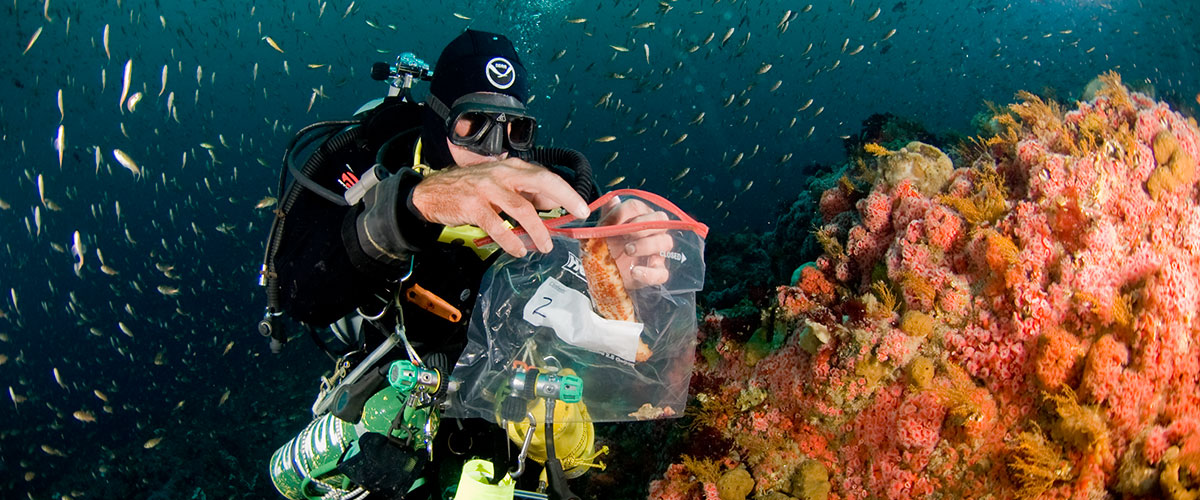Overview

Scientists monitor the status of water, habitat, living resource, and maritime archaeological resource condition to detect trends over time within the sanctuaries. Monitoring programs are typically tailored to the information needs of each individual site, however, some monitoring activities apply to more than one sanctuary.
Monitoring programs regularly and systematically monitor basic indicators of ecosystem health to determine change over time. Monitoring programs commonly track the distribution, abundance, and interactions among key species as well as the physical influences throughout the environment.
Long-term monitoring data provide resource managers with the information necessary to identify ecosystem change over time. Without this information managers would never know how natural and anthropogenic pressures are affecting ecosystems and if management actions are achieving resource protection and improvement goals. As such, many management actions and decisions are made based on acquired information from monitoring programs.
The National Marine Sanctuary System manages marine areas in nearshore and open ocean waters that range in size from less than one to almost 140,000 square miles. As a result, each area has its own concerns and requirements for environmental monitoring, therefore, monitoring programs are typically tailored to the information needs of each individual site. However, ecosystem structure and function in all these areas have similarities and are influenced by common factors that interact in comparable ways. Furthermore, the human influences that affect the structure and function of these sites are similar. For these reasons, in 2001 the program began to implement System-Wide Monitoring (SWiM) which facilitates the development of effective, ecosystem-based monitoring programs that address management information needs using a design process that can be applied in a consistent way at multiple spatial scales and to multiple resource types. It identifies three primary components common among all marine ecosystems: water, habitats, and living resources.
As part of SWiM, Condition Reports have been developed for each of the marine sanctuaries as a way to summarize the condition and trends of sanctuary resources. Monitoring data is summarized throughout these reports as a way to describe the status and trends of water quality, habitat, living resources, and maritime archaeological resources.
Marine sanctuaries around the country contain research and monitoring areas specially designed to help us better understand ecosystems and how they work, and to provide early warning for impending problems that we might be able to control. These areas are called "sentinel sites" and within them you'll find government and academic scientists, as well as citizen scientists, working together and sharing information so we can all achieve our mutual goal of protecting our nation's cherished ocean treasures.
Most monitoring programs taking place in sanctuaries are conducted by federal, state, and academic partners as well as citizen scientists. While some monitoring programs are led by sanctuary staff, we rely heavily on the support and contributions made by our partners.
Most monitoring programs are funded by sanctuary partners and sources external to the sanctuary system.
The Sanctuary Monitoring Inventory is a listing of all monitoring programs taking place within the national marine sanctuaries. Programs are conducted by either the sanctuary itself or by our many partners.
Each monitoring program that is listed in the inventory contains the following information:
- Title - monitoring program title
- Project Lead - lead agency and/or primary investigator responsible for the monitoring program
- Objective - summary of the goals and objectives of the monitoring program
- Method - describes the program methods and protocols
- Status - describes if the monitoring program is currently active, inactive due to lack of funding, or completed
- Duration - describes when the program started and, if applicable, when it ended
- Frequency - describes how often data are collected
- Links - website links to actual monitoring program
- Partners - other key partners
- Keywords - descriptive terms summarizing what is monitored
Contact the research coordinators at each national marine sanctuary for additional information.

